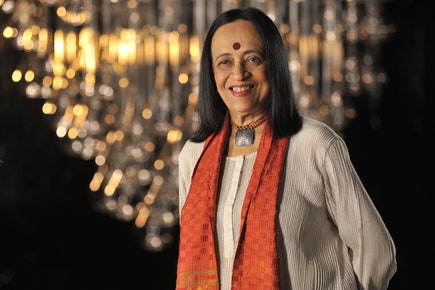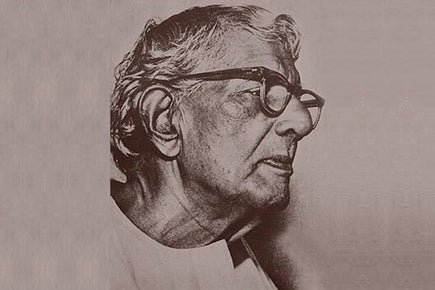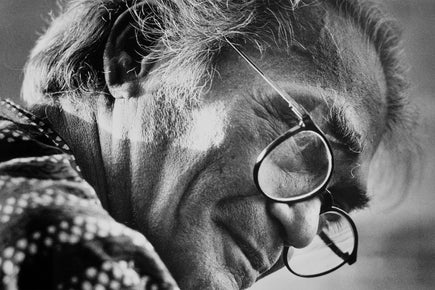15 Words That Help Demystify the World of Art
At times, Art can feel like an endless trail of words ending with ‘ism’, that are both confusing, and daunting. Each ‘ism’ refers to a specific artistic movement or style. Here are 15 such words that will help you understand the fascinating world of art a little better.

1. FIGURATIVISM
Figurativism, or Figurative Art is a form of Modern Art in which artists represent the real world, and the human figure often becomes the central subject. It is the opposite of Abstract Art. It has evolved over the years, and how real the central figure or subject looks, varies by artist. As long as the painting retains some elements which make the subject identifiable and recognizable, it classifies as Figurative Art.
Famous Artists: Leonardo da Vinci, Raja Ravi Varma
 (Figurativism: Mona Lisa by Leonardo da Vinci)
(Figurativism: Mona Lisa by Leonardo da Vinci)
 (Figurativism: Untitled work by Raja Ravi Varma)
(Figurativism: Untitled work by Raja Ravi Varma)
2. ABSTRACTISM
In Abstractism, the imagery is independent of, and departing from reality. Artists used shapes, colours, forms and associations to suggest meaning. The departure from reality and extent of abstraction could be partial, quasi-figurative, or complete, bearing no reference to anything recognizable. The phrase “Art for Art’s Sake” came into being with the evolution of Abstract Art, which emphasized the process of creation being more important than the creation itself.
Famous Artists: Wassily Kandinsky, V.S. Gaitonde
 (Abstractism: 1910 Untitled work by Wassily Kandinsky)
(Abstractism: 1910 Untitled work by Wassily Kandinsky)
 (Abstractism: 1995 Untitled work by VS Gaitonde)
(Abstractism: 1995 Untitled work by VS Gaitonde)
3. IMPRESSIONISM
The term 'Impressionism' was first used as a form of criticism, as Impressionist paintings were not executed with precision, but only left an ‘impression’ of the actual forms, looking like sketches of paintings that the artists wanted to paint in more detail later. Typically capturing a moment in time, Impressionist art is characterized by the use of thin, small brush strokes and accurate depiction of light.
Famous Artists: Claude Monet, Pierre-Auguste Renoir
 (Impressionism: The Japanese Bridge by Claude Monet)
(Impressionism: The Japanese Bridge by Claude Monet)
 (Impressionism: The Girl With the Watering Can by Pierre-Auguste Renoir)
(Impressionism: The Girl With the Watering Can by Pierre-Auguste Renoir)
4. POST-IMPRESSIONISM
A short lived movement predominant in France, Post Impressionism lasted from roughly the 1880’s to early 1900’s. Post Impressionists reacted against the naturalistic depiction of light and colour in Impressionism. They included more geometric forms, distorted forms to express themselves better, and used bold, often unnatural colours.
Famous Artists: Vincent Van Gogh, Paul Cézanne
 (Post-Impressionism: The Starry Night by Vincent van Gogh)
(Post-Impressionism: The Starry Night by Vincent van Gogh)
 (Post-Impressionism: Jug, Curtain and Fruit Bowl by Paul Cezanne)
(Post-Impressionism: Jug, Curtain and Fruit Bowl by Paul Cezanne)
5. POINTILLISM
Pointillism is an off-shoot of Impressionism in which artists were more focused on the brushwork used to apply paint. Artists used a technique in which the entire painting was made up of small, distinct dots of color. The style is based on the science of optics, where the mind and eye blend colour spots placed close together, into a full image. This is how pixels in computer screens form an image.
Famous Artist: Georges-Pierre Seurat
 (Pointillism: A Sunday Afternoon on the Island of La Grande Jatte by Georges Seurat)
(Pointillism: A Sunday Afternoon on the Island of La Grande Jatte by Georges Seurat)
 (Pointillism: Eiffel Tower by Georges-Pierre Seurat)
(Pointillism: Eiffel Tower by Georges-Pierre Seurat)
6. FAUVISM
Fauvism was a short-lived movement that was the first new artistic style of the 20th century. Fauvists painted their emotional responses to subjects and nature, and also according to intuition. They focused on colour as an independent element, separate from form, and painted vividly and arbitrarily in bold brushstrokes without staying true to an object’s natural appearance. Fauvists had a preference for cheery landscapes and lighthearted subjects that were pleasing to the viewer.
Famous Artist: Henri Matisse
 (Fauvism: Woman With a Hat by Henri Matisse)
(Fauvism: Woman With a Hat by Henri Matisse)
 (Fauvism: Open Window by Henri Matisse)
(Fauvism: Open Window by Henri Matisse)
7. EXPRESSIONISM
Expressionism was a modernist movement, often associated with angst. It evolved in Germany, in response to the widespread anxiety experienced by people about the discordant human relationships prior to World War I. Expressionistic art depicted emotional responses aroused in an individual by various world events. Expressionists often distorted form and exaggerated colour while using jarring, violent, or dynamic application of elements in order to evoke moods or ideas in the onlooker.
Famous Artists: Edvard Munch, Franz Marc
 (Expressionism: The Scream by Edvard Munch)
(Expressionism: The Scream by Edvard Munch)
 (Expressionism: Fate of the Animals by Franz Marc)
(Expressionism: Fate of the Animals by Franz Marc)
8. DADAISM
Born as a negative reaction to the horrors of World War I, Dadaism or Dada was considered an ‘anti-art’ and ‘anti-war’ movement. It resulted from discussions that took place at Cabaret Voltaire, a nightclub in Zurich, Switzerland. Dada art celebrated the absurd, the irrational and the nonsensical. Regarded as a precursor to Surrealism, Dada ignored aesthetics, and was intended to be offensive.
Famous Artists: Marcel Duchamp, Max Ernst
 (Dadaism: L.H.O.O.Q by Marcel Duchamp, where he painted Mona Lisa with a mustache)
(Dadaism: L.H.O.O.Q by Marcel Duchamp, where he painted Mona Lisa with a mustache)
 (Dadaism: Chinese Nightingale by Max Ernst)
(Dadaism: Chinese Nightingale by Max Ernst)
9. SURREALISM
Surrealism was a cultural movement that began in the early 1920s. Surrealist artists aimed to unleash their subconscious mind, and convert their imagination and dreams into reality on a canvas. Their art was about embracing chance, while forgoing reason and reality. They often painted unnerving, perplexing scenes with precision, in order to jolt the viewer and evoke various reactions. They explored concepts such as psychoanalysis and other Freudian theories within their art.
Famous Artists: Salvador Dali, Ganesh Pyne
 (Surrealism: Geopolitical Child Watching the Birth of the New Man by Salvador Dali)
(Surrealism: Geopolitical Child Watching the Birth of the New Man by Salvador Dali)
 (Surrealism: The Window by Ganesh Pyne)
(Surrealism: The Window by Ganesh Pyne)
10. CUBISM
Cubism is considered the most influential art movement of the 20th century, inspiring later art movements and movements in music, literature and architecture. Cubists presented a subject from various vantage points. Emphasizing the two-dimensionality of the canvas, they broke up the subject and reassembled it an abstracted form while applying geometric angles, lines and shapes to it. Cubists rarely painted landscapes, and sometimes used motifs fused with letters and objects.
Famous Artists: Pablo Picasso, Marc Chagall
 (Cubism: The Weeping Woman by Pablo Picasso)
(Cubism: The Weeping Woman by Pablo Picasso)
 (Cubism: The Green Violinist by Marc Chagall)
(Cubism: The Green Violinist by Marc Chagall)
11. FUTURISM
Originating in Italy in early 20th century, Futurism glorified modernity and the machine age. Futuristic artworks highlighted speed, technology, violence, and youth. Machines such as cars and airplanes were often incorporated into the art, along with other objects resonant with industrialization. In essence, Futurist artists celebrated the triumph of technology over nature.
Famous Artists: Gino Severini, Umberto Boccioni
 (Futurism: Memories of a Journey by Gino Severini)
(Futurism: Memories of a Journey by Gino Severini)
 (Futurism: Simultaneous Visions by Umberto Boccioni)
(Futurism: Simultaneous Visions by Umberto Boccioni)
12. SYMBOLISM
Symbolism is a movement in which symbols were used to portray an idea. Symbolists used abstract images to capture ideas, rather than the physical reality of the world. Importance was given to the meaning behind colours, lines, shapes and forms. Through their paintings, artists sought to escape from reality and emphasize their emotions, feelings, ideas, and dreams.
Famous Artists: Gustav Klimt, SH Raza
 (Symbolism: The Kiss by Gustav Klimt)
(Symbolism: The Kiss by Gustav Klimt)
 (Symbolism: Surya Namaskar by SH Raza)
(Symbolism: Surya Namaskar by SH Raza)
13. REALISM
Realism began in the 1850’s in France, as a rejection of ‘romanticism’. Realists revolted against exaggeration and drama, and sought to portray people and situations in a more truthful manner. They depicted people from all classes of society, and emphasized situations that arise in ordinary life. The popularity of ‘realistic’ works grew with the advent of photography.
Famous Artists: Gustave Courbet
 (Realism: The Stone Breakers by Gustave Courbet)
(Realism: The Stone Breakers by Gustave Courbet)
 (Realism: A Burial at Ornans by Gustave Courbet)
(Realism: A Burial at Ornans by Gustave Courbet)
14. POPISM
Popism, more commonly termed Pop Art, emerged in the 1950’s in Britain and the United States. The movement was meant to challenge the traditions of fine art, by including imagery from popular culture, such as advertising, comic books and the news. Employing irony, pop artists often chose imagery with logos or product labeling, and emphasized kitschy or ordinary elements of different cultures.
Famous Artists: Andy Warhol, Eduardo Paolozzi
 (Pop Art: Marilyn Diptych by Andy Warhol)
(Pop Art: Marilyn Diptych by Andy Warhol)
 (Pop Art: Meet the People by Eduardo Paolozzi)
(Pop Art: Meet the People by Eduardo Paolozzi)
15. CONCEPTUALISM
Conceptualism expanded the boundaries of art and redefined it. Conceptual artists created “art that is about art”. For them, ideas were more important than the various visual components of art and other concerns such as expression, aesthetics and skill. The art took forms like installations and performance, which contradicted earlier concepts of art. Artists used any material available to them to express an idea.
Famous Artists: Marcel Duchamp, Joseph Kosuth
 (Conceptualism: The Fountain by Marcel Duchamp is a porcelain urinal)
(Conceptualism: The Fountain by Marcel Duchamp is a porcelain urinal)
 (Conceptualism: One and Three Chairs by Joseph Kosuth)
(Conceptualism: One and Three Chairs by Joseph Kosuth)

























































































